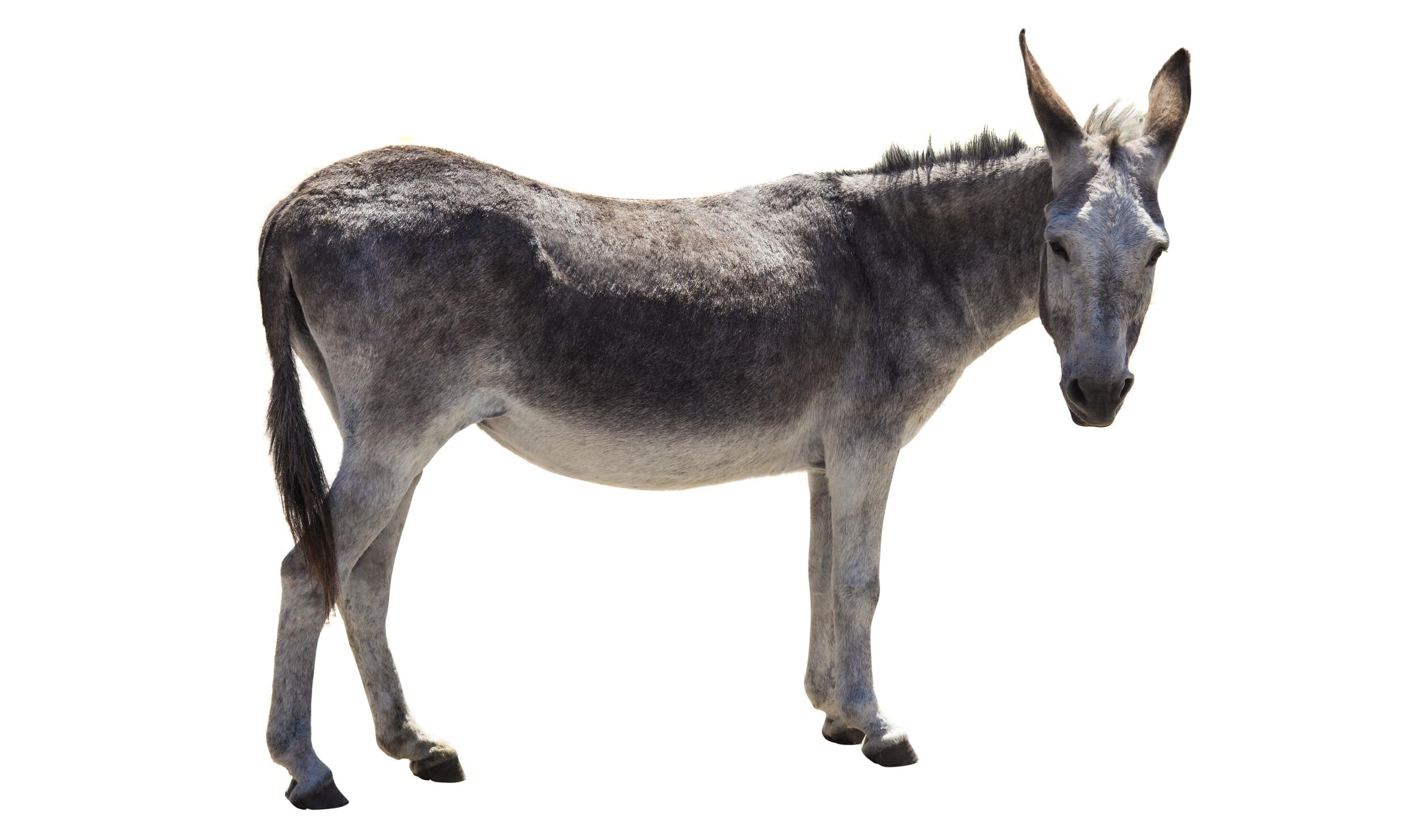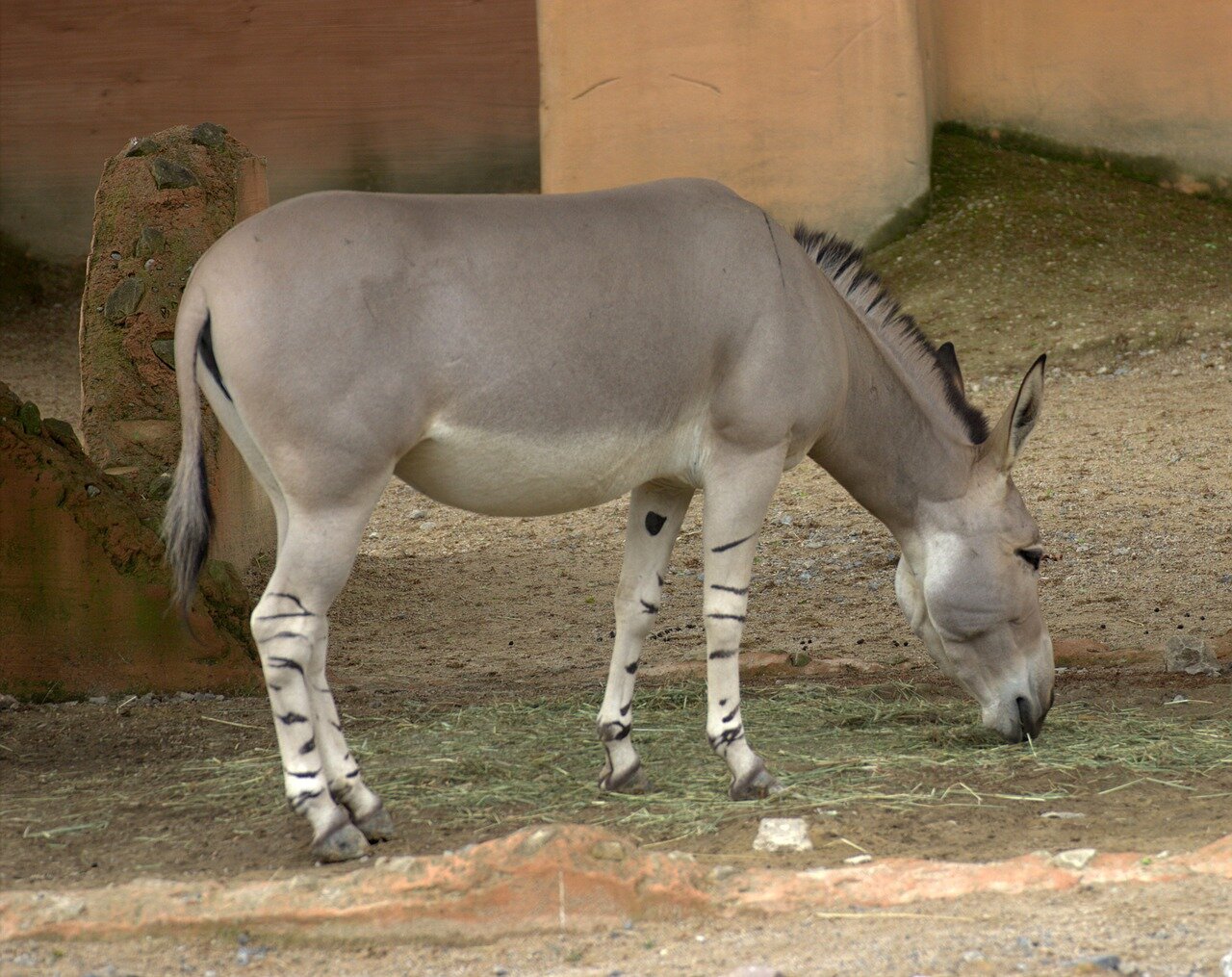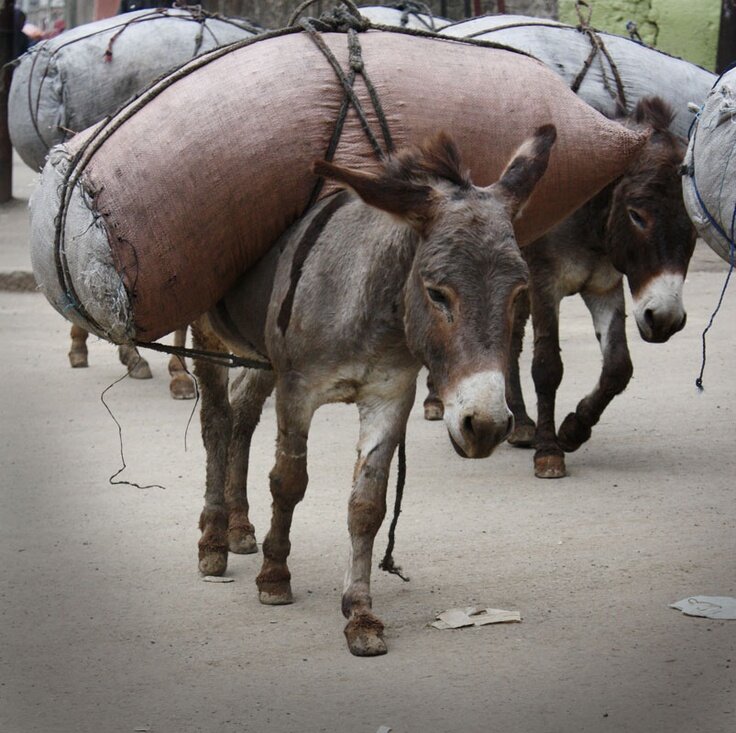Donkey
Shutterstock
The Donkey
It’s the object of jokes, considered stubborn, contrary, and untrainable. How could an animal so deprecated, even reviled, in classical sources have nonetheless become part of our lives?
The domestic donkey (Equus asinus) is a descendant of the wild ass. There were several species of wild ass that lived in Africa and Asia; the two that remain today—the Somali wild ass and the onager—are critically endangered.
Somali Wild Ass. Pixabay
DOMESTICATION: WHEN AND WHY
Although populations of wild asses existed in Africa and Asia, archaeological evidence suggests that the domestication process took place in northeastern Africa, at the edge of the Sahara. Besides excavation, language is also a useful tool in tracing this process, for the appearance of new words used to distinguish domestic donkeys from their wild relatives is an indicator of their emergence in daily life. The domestication process took place between 5500 and 4500 BCE, and the first confirmed remains of a domesticated donkey come from Egypt and date to 4600 to 4400 BCE.
Why Bother?
If donkeys were indeed so hard to catch and so troublesome once caught, why bother domesticating them? The purpose seems clear: it was transportation. Donkeys became essential partners in the development of caravan routes and international trade, except in sand deserts, and donkey caravans began to crisscross North Africa from 3500 BCE onwards. Donkeys became, if not the eighteen-wheeler, then at least the nimble, lightweight Toyota pickup truck of the day.
Egyptian Tomb Model. The Metropolitan Museum of Art
Donkeys are very well-suited to this role and the arid environments they operated in, thanks to traits inherited from their wild ancestors: they are surefooted and hardy, can survive on small amounts of low-quality food, and are capable of managing without water for up to three days. Moreover, their distinctive long ears are perfectly “designed” to help dissipate the brutal heat of the desert regions.
Egypt
By the late fourth millennium BCE, donkeys appear frequently in Egyptian art. They are often depicted in agricultural scenes, a testament to their essential function as pack animals.
Wikimedia Commons
Donkeys are also found in royal and sacred contexts, including elite human burials. Ten donkey skeletons, showing signs of wear from hard work, were found nestled in mudbrick graves at a pharaonic funerary complex in Abydos, back when Egypt was just becoming a state.
Donkey skeletons at Abydos. (Image: © PNAS, National Academy of Sciences, Copyright 2008.)
All of this suggests that donkeys were considered important, valued animals in ancient Egypt, and at some point they became a sign of elite status, just as a Toyota pickup signals higher status than a motor scooter does. It is likely that the price of a donkey was beyond the means of most people.
The Near East
Via trade routes, donkeys made their way into the Near East by the late fourth millennium BCE. It is here that the donkey added a new chapter to the human-animal relationship by becoming the first ridden animal: a shift that signified not just the rider’s moneyed status, but his power and authority as well. Here too, donkeys were included in aristocratic and royal burials. We also see the emergence of a hybrid animal—a cross between donkeys and onagers. This hybrid became the first animal to be used on the battlefield, as shown in the “Standard of Ur,” where donkeys are shown harnessed to a war chariot.
Standard of Ur – British Museum
The Classical World
Donkeys arrive in the Greek world by the late third millennium BCE. Once again, these tough and hardy animals become central to agriculture, loaded with wheat sheaves or baskets of grapes, carrying water for irrigation, turning millstones and olive presses, while also transporting goods to market. Yet, in classical literature—and from there into our western canon—donkeys come across as obstinate, inferior, and “lesser” animals. In fact, they are often portrayed as targets of physical abuse—Aesop’s Fables are full of examples. But we know that donkeys were essential work animals, key partners in the construction of civilizations. So, what is going on here? The answer is status and the class system. Following the domestication of the horse, that animal became the ride of the elite, ousting the donkey from this role; the donkey reverted to being the animal of the working class. The elite was the literate group—they wrote the texts and, in their eyes, donkeys were inferior to horses, just as the lower classes were inferior to the elite. Regardless of their utility, donkeys, and those who relied on them, become identified as lesser beings, a trend that, sadly, largely continues to the present day.
Wikimedia Commons
Donkeys and Religion
Regardless of their fluctuating status, donkeys pop up as symbolically significant creatures in a variety of religious traditions.
In ancient Egypt they were connected to Seth, the god of chaos and disorder, exemplified in desert wilderness. The relationship between donkeys and the desert has already been discussed, and their connection to chaos and disorder is perhaps further explained by their ear piercing bray, as well as their often independent attitude. In the classical tradition, the donkey is the mount of Dionysus/Bacchus, the god of wine and creator of chaos. Donkeys were essential to the grape harvest and wine production, so the connection here is quite clear. The animal also figures prominently in Christian iconography, but in its humble, rather than chaotic, persona: Mary rode a donkey en route to Bethlehem and during the family’s flight into Egypt, while Jesus entered Jerusalem on donkey-back on Palm Sunday.
Pietro Lorenzetti, Wikimedia Commons.
In Islam, donkeys are connected to the lineage of prophets, including the Prophet Muhammed, who had a donkey named Ya’fur. Ya’fur was part of a distinguished animal lineage, descended from a line of donkeys ridden by the Prophet’s predecessors. When Muhammed ascended to heaven, Ya’fur is said to have thrown himself down a well.
Donkeys in the Modern World
Today donkeys can be found in almost every corner of the world. For tens of millions of people, this animal remains the primary form of transportation and labor/power.
Edward Middleton, Wikimedia Commons
Unfortunately, the elite snobbery towards donkeys persists. Except among a few modern-day, western pet-keepers—a sub-elite!—donkeys and their owners remain part of a tragic legacy that devalues them and too often condemns them to lives of marginalization, neglect, and abuse. Fortunately, the animal also has a growing group of champions who work to improve the treatment of working donkeys as well as the lives of their owners.
Wikimedia Commons.
It is not too extravagant to say that human civilization has flourished because there were donkeys to move farmers, traders and their goods from place to place around the world. We, as a species, owe something to the strong, hardy, patient donkey.
—Dr. Carolyn Willekes










